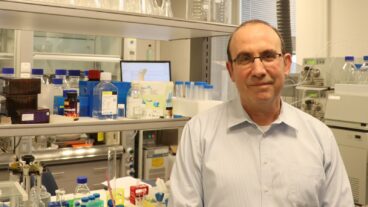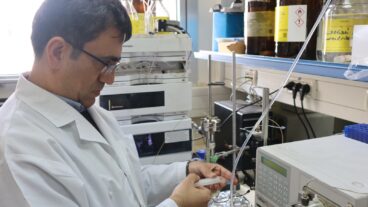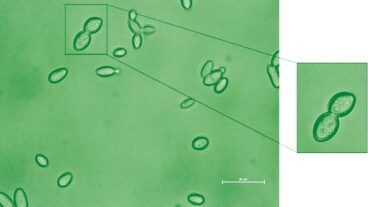A young Israeli company called Fertiligent has devised a way to improve the effectiveness of a treatment for infertility. The technique could enable many more couples to conceive without having to resort to costly and invasive in-vitro fertilization (IVF) treatment.
Infertility has become a growing problem in the western world, as an older pool of potential mothers and fathers, as well as environmental factors have made conceiving a baby more challenging.
The National Center for Health Statistics, in Maryland, estimates that about 10 percent of the American childbearing population (or 6 million couples) suffers from infertility.
This has led to many innovations in infertility treatment. Most of the new techniques, however, have focused on in-vitro fertilization (IVF) – or test tube babies, as they are commonly known.
According to the latest figures from the U.S. Centers for Disease Control and Prevention, there are more than 100,000 in-vitro attempts a year in the US. This procedure, as anyone who’s gone through it knows, has many drawbacks. It’s extremely expensive (about $12,400) for whoever is footing the cost, – whether it is individuals or health insurance companies – as well as being invasive, time-consuming, and uncomfortable.
While IVF treatments have advanced in effectiveness since being introduced, there has been little change over the past 20 years in the step that infertile couples take before turning to IVF – artificial insemination.
Now, Fertiligent has devised a better way to administer Intra Uterine Insemination (IUI) which increases the chances of success and could significantly reduce the number of couples who must turn to IVF.
The theory behind the Fertiligent device is to mimic the way in which conception occurs naturally – introducing the sperm into the uterus over a period of several hours.
In the natural fertility process, the cervix corrals the sperm, and releases them into the womb in small groups. In this way, the egg will encounter only a suitable number of sperm when it is ready.
“It turns out that the egg is quite particular when receiving guests. It is incapable of meeting all the sperm simultaneously. When the egg is flooded by sperm, it seals itself off and refuses to meet even one,” Ronnie Klein, Fertiligent’s CEO told ISRAEL21c.
Klein is a well-known figure in the world of medical devices in Israel. For 13 years, he worked as a sales manager for large companies, before focusing on startups. Fertiligent is supported by the Yozmot Haemek Ltd. technology incubator in Migdal Ha’emek, which invested $350,000 in the company.
When Fertiligent was started, its concept built on 13-year-old research performed by an American company, which had developed a device and found that slow-releasing the sperm over a period of four hours significantly increased the chances of conception. But the company’s catheter at the time was large and bulky, and forced women to lie still on a hospital bed for those four hours.
“We took a deeper look into the issue, and developed a disposable pump that is small and portable,” said Klein. “Ours is a four hour procedure with a tiny catheter through which fluid is gradually fed into a catheter whose end is located in the womb and that a woman can remove and discard herself. She can have it put in and either wait in a clinic and drive herself home, or move freely with the pump on her hip and go about her business if she wishes.”
With the Fertiligent pump device – instead of the ‘one-shot’ IUI, – the ‘window of opportunity’ for fertilization is extended by the slow release of sperm in carefully measured doses into the uterine cavity. This prevents loss of sperm by blocking the cervical cavity and mimicking the natural slow release process as performed by the cervix in healthy women. Hopefully, when the egg is ready to receive the sperm, they are in place.
That contrasts sharply to IUI as it is performed today, in which IUI’s success depends on the ability of the medical team to precisely measure ovulation and derive the timing of the egg’s readiness – and then injecting all of the sperm in a single shot. This method requires great effort and its chances of success are slim.
The tests that have been done in the device in Israel have been extremely promising, said Klein. The standard success rate for IUI is 10-12 percent, and the success rate in the approximately 40 experiments with the Fertiligent device so far, have shown a success rate around 30 percent.
Potentially, the device could significantly reduce the number of couples who need to turn to IVF, which, unlike IUI is invasive, requires anesthesia and giving the woman a high level of hormones.
IVF involves removing the egg under anesthesia, mixing the egg and sperm in a test-tube, fostering the fertilized egg for a few days in the lab, and then implanting it in the womb. The process of removing the egg, and reimplanting it is invasive – essentially full-blown surgery with all of the accompanying risks, and there has been growing concern as to its effect on the health of the mother and the child being conceived.
The process is extremely expensive, costing between $10,000- $15,000 or more per attempt. In countries such as Israel where the costs are covered by public health insurance, the amounts are crippling to the health funds. In the United States, where the procedure is generally not covered, many couples simply cannot afford to pursue fertility treatment.
The company is conducting ongoing trials at the Lin Medical Clinic in Haifa, the Emek Medical Center in Afula, and is now planning European trials near Lyon in France, scheduled for April.
“We are currently recruiting investments in order improve the design of the pump and make it smaller,” said Klein. “The money will also finance our clinical trials in Europe for the CE mark, and then we will approach the American market as well.”
The company has already begun procedures with the U.S. Food and Drug Administration to obtain US approval.
The ultimate vision for Fertiligent’s IUI product also includes a strainer which helps improve the quality of the sperm before it is used for insemination. It would do this by separating healthy sperm cells from dead cells and white blood cells that are part of the mix before the seminal fluid is then inseminated into the womb. While moving forward with their pump device, the company is working on a parallel track of developing the straining element.
So, before too long, thanks to the Israeli technology of Fertiligent, couples will have a real choice before they decide to take on the arduous IVF process.












